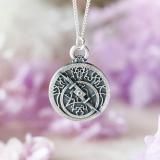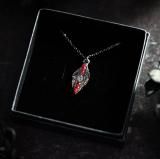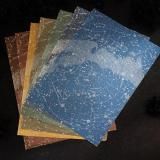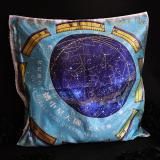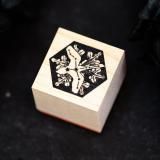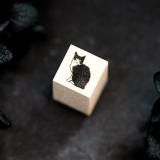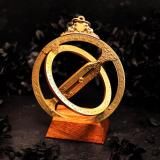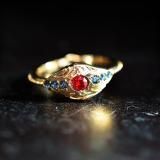海福雑貨通販部
カテゴリー
 海福雑貨謹製品
海福雑貨謹製品 古い食器
古い食器 紅茶・ホットドリンク
紅茶・ホットドリンク 古いもの
古いもの ヴィンテージアクセサリー
ヴィンテージアクセサリー 鉱物アクセサリー(鉱物/化石/貝)
鉱物アクセサリー(鉱物/化石/貝) 琥珀アクセサリー
琥珀アクセサリー モルフォ蝶アクセサリー
モルフォ蝶アクセサリー オリエンタルアクセサリー
オリエンタルアクセサリー アクセサリー(英国)
アクセサリー(英国) 鉱物香水瓶
鉱物香水瓶 ローマングラス
ローマングラス 鉱物・化石
鉱物・化石 天文オブジェ・アクセサリー
天文オブジェ・アクセサリー 雑貨
雑貨 文房具
文房具 マスキングテープ・クリアテープ・トレーシングペーパーシール
マスキングテープ・クリアテープ・トレーシングペーパーシール レプリカ装備
レプリカ装備 ステンドグラス風装飾
ステンドグラス風装飾 蝶標本
蝶標本 ストームグラス
ストームグラス エジプト香水瓶
エジプト香水瓶 ミニチュア家具・雑貨
ミニチュア家具・雑貨 ブラススタンピングパーツ
ブラススタンピングパーツ 水中花
水中花 asako mizusawa
asako mizusawa anagohan。
anagohan。 Ishiko. / 海にたゆたう
Ishiko. / 海にたゆたう 異装具店
異装具店 医療系雑貨生みたて卵屋
医療系雑貨生みたて卵屋 IRoDoRi
IRoDoRi うみねこ博物堂
うみねこ博物堂 N845
N845 窯人
窯人 硝子工房 YUKI
硝子工房 YUKI KANNA
KANNA KANPACHI
KANPACHI 気分屋SOSOSO
気分屋SOSOSO きゃねこ
きゃねこ 孔雀洞雑貨舗
孔雀洞雑貨舗 coorun
coorun くらがのりえ
くらがのりえ 小島実
小島実 kopfkino (コップフキーノ)
kopfkino (コップフキーノ) conch
conch Shior Sion
Shior Sion しばすけ
しばすけ 【シャララ舎】
【シャララ舎】 しゅーる街
しゅーる街 石華工匠
石華工匠 ta-nya
ta-nya たまごアーティスト響co./睦月レイ
たまごアーティスト響co./睦月レイ 地図絵屋
地図絵屋 千舟
千舟 ツメカ
ツメカ 時計荘
時計荘 とんぼ玉nao
とんぼ玉nao なお/空想絵画物語
なお/空想絵画物語 nagi
nagi ネジト博士
ネジト博士 博物工房
博物工房 HASHIMOTO HIROMI
HASHIMOTO HIROMI ハニカミヤ
ハニカミヤ 西村はる
西村はる ひよこまめ雑貨店
ひよこまめ雑貨店 Marie pottery
Marie pottery ミツボシカガク
ミツボシカガク 無双庵
無双庵 【me/me】
【me/me】 遊星商會
遊星商會 Radiostar
Radiostar 緑荳胡同
緑荳胡同 Love.....?
Love.....? faceless
faceless W.無色
W.無色- ☆ご注文品(ご購入者様は決まっております)
グループ
- 2025年12月
- 2025年11月
- 2025年10月
- ピアス
- イヤリング・イヤーフック・イヤーカフ
- ネックレス
- ブレスレット
- リング
- ヘアーアクセサリー
- ブローチ・ストールピン
タックピン - ハットピン・ネクタイピン
- ループタイ
- バッグチャーム
キーホルダー・ストラップ - 手拭い
- ファッション
- バッグ
- オブジェ
- 文房具
- 紙もの
- 布もの
- 陶もの
- ガラスもの
- 革もの
- 材料
- エジプト香水瓶
- フランスアンティーク雑貨
- 海福族
- その他
- インテリア
- 赤色のもの
- 青・水色のもの
- 黄色いもの
- 緑色のもの
- 紫色のもの
- ピンク色のもの
- オレンジ色のもの
- 茶色いもの
- 白いもの
- 黒・濃紺のもの
- 金色のもの
- 銀色・灰色のもの
- 透明なもの
- 鳥モチーフのもの
- 蝶々モチーフのもの
- 猫モチーフのもの
- 薔薇モチーフのもの
- プレゼントにおすすめ
営業日カレンダー
| 日 | 月 | 火 | 水 | 木 | 金 | 土 |
|---|---|---|---|---|---|---|
| 1 | 2 | 3 | 4 | 5 | 6 | |
| 7 | 8 | 9 | 10 | 11 | 12 | 13 |
| 14 | 15 | 16 | 17 | 18 | 19 | 20 |
| 21 | 22 | 23 | 24 | 25 | 26 | 27 |
| 28 | 29 | 30 | 31 |
| 日 | 月 | 火 | 水 | 木 | 金 | 土 |
|---|---|---|---|---|---|---|
| 1 | 2 | 3 | ||||
| 4 | 5 | 6 | 7 | 8 | 9 | 10 |
| 11 | 12 | 13 | 14 | 15 | 16 | 17 |
| 18 | 19 | 20 | 21 | 22 | 23 | 24 |
| 25 | 26 | 27 | 28 | 29 | 30 | 31 |
定休日に頂いたご注文は、
定休日明けの発送となります。
ピックアップ商品
-

 ストロベリーガーデンネックレス
4,180円(税込)
ストロベリーガーデンネックレス
4,180円(税込)
-

 ペストマスクのチャーム(牛革・黒)
5,800円(税込)
ペストマスクのチャーム(牛革・黒)
5,800円(税込)
-

 透かし装飾の硝子カップ&ソーサー(傷汚れ多め)
1,800円(税込)
透かし装飾の硝子カップ&ソーサー(傷汚れ多め)
1,800円(税込)
-

 図像印「アヒル」
440円(税込)
図像印「アヒル」
440円(税込)
-

 ペストマスクロゼット(黒)
5,200円(税込)
ペストマスクロゼット(黒)
5,200円(税込)
-

 ねこのマスクロゼット
5,300円(税込)
ねこのマスクロゼット
5,300円(税込)
-

 透明硝子のブローチ
6,600円(税込)
透明硝子のブローチ
6,600円(税込)
-

 レトロ金彩グリーンカップ&ソーサー
2,800円(税込)
レトロ金彩グリーンカップ&ソーサー
2,800円(税込)
-

 レターセット「打鍵印字機便箋封筒揃」
レターセット「打鍵印字機便箋封筒揃」
-

 瑪瑙のユニコーン
瑪瑙のユニコーン
-
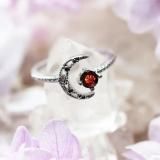
 ガーネットと三日月の指輪
ガーネットと三日月の指輪
-

 ウルグアイ産アメジスト原石
ウルグアイ産アメジスト原石
-

 ピンク硝子のお花ネックレス
ピンク硝子のお花ネックレス
-

 ウルグアイ産アメジスト原石
ウルグアイ産アメジスト原石
-
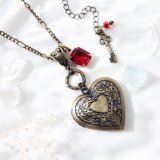
 heart locket pendant - red
heart locket pendant - red
-

 温度で色が変わるペンダント
温度で色が変わるペンダント
-

 シェルのラウンド型ケース(青×白)
シェルのラウンド型ケース(青×白)
-

 シェルのラウンド型ケース(白×白)
シェルのラウンド型ケース(白×白)
-
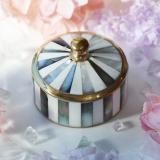
 シェルのラウンド型ケース(白×灰)
シェルのラウンド型ケース(白×灰)
-

 ルネサンス式携帯用日時計
ルネサンス式携帯用日時計
-

 黒×金装飾ブローチ
黒×金装飾ブローチ
-

 レトロ金彩グリーンシュガーポット
レトロ金彩グリーンシュガーポット
-

 オーロラオーラクリスタル
オーロラオーラクリスタル
-

 真珠と青い海のブローチ(フロストブルー)
真珠と青い海のブローチ(フロストブルー)
-

 真珠と青い海のブローチ(フロストロイヤルブルー)
真珠と青い海のブローチ(フロストロイヤルブルー)
-

 メガネ拭き「眼球図」
メガネ拭き「眼球図」
-

 オーロラオーラクリスタル
オーロラオーラクリスタル
-

 vintage drop earring - green
vintage drop earring - green
-

 flower drop necklace - red
flower drop necklace - red
-

 flower drop necklace - white
flower drop necklace - white
-

 ブローチ「宵闇色の雫」
ブローチ「宵闇色の雫」
-

 ネックレス「夜を告げる一番星の首飾り」
ネックレス「夜を告げる一番星の首飾り」
-

 アクリルカメオのブローチ
アクリルカメオのブローチ
-

 ペンダント「航海用アストロラーべ」(銀色)
ペンダント「航海用アストロラーべ」(銀色)
-

 青い蝶々の銀製ブローチ
青い蝶々の銀製ブローチ
-

 琥珀色硝子の星ネックレス
琥珀色硝子の星ネックレス
-

 レトロ金彩グリーンティーポット
レトロ金彩グリーンティーポット
-

 アルゼンチン産ピンクアメジスト原石
アルゼンチン産ピンクアメジスト原石
-

 図像印「仔ウサギ-2」
図像印「仔ウサギ-2」
-

 図像印「シロクマ」
図像印「シロクマ」






